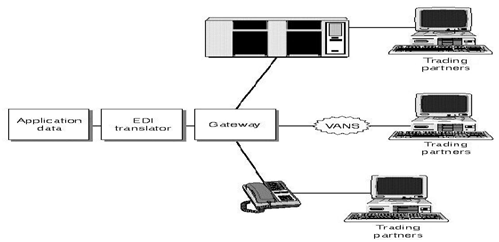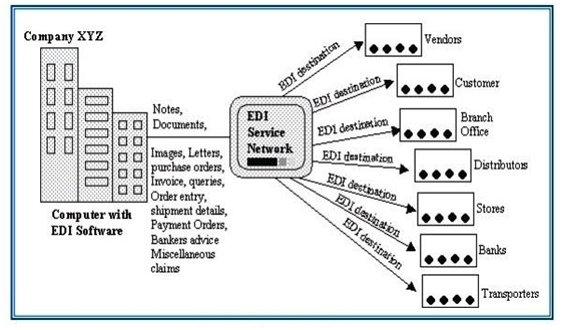Best for DIMS Ecommerce Solved Assignment and others
Answer
EDI assumes availability of a wide area network to which organisation can subscribe. All organisations willing to join EDI services must subscribe to the common network. In addition, all organisations participating in a particular EDI services group should agree to a message format that they will use, and load appropriate EDI software on their computer systems.
This software is responsible for providing translation services, EDI services and network access services. When a sender’s computer system produces a message and passes it to the translation service software, this translates the message into the common agreed structure and passes it to EDI service software. EDI service software executes necessary functions and procedures to send the message, track it in the network, and ensure that it reaches its destination.
EDI services, in addition, may include procedures to ensure security functions, billing and accounting functions and generate necessary logs for auditing purposes. Network access services are responsible for actually controlling the interaction with the network that transports messages from one site to another.
Electronic data interchange (EDI) offers exchange of business data directly between the computers of one or more trading companies. EDI is a paperless method of transferring such data as orders, forecasts, invoices and order responses. Some advantages are the elimination of data reentry with the consequent risks of copying errors; process speed also is improved. So, cost reductions can be realized.
EDIs success relies on the use of standardized formats that are recognized by the trading partners in an EDI relationship. Until mid-1996 the data was sent to and received by mainly third-party or value-added networks (VANs) for handling communications and mailboxes (Figure 1). The VANs use a traditional-store-and- forward concept of handling data. Rental fees are charged for use of an electronic mailbox to hold the data. Additional costs are levied for every message sent and retrieved from that mailbox, measured on a volume basis (i.e., the more data you deal with the more you pay). As the Internet matures as an alternative communications method, things are beginning to change. The figure 2 demonstrates the changed pattern.


The transport network provides a powerful electronic messaging service to support EDI services. Transport network uses a “store and forward mechanism” and messages are sent to ‘mail boxes’ that are managed by the network service provider. The originator can send his messages at any time independent of the recipient’s system status, i.e. whether or not it is ready for receiving. The recipient systems periodic check their mail boxes and transfer messages from network mail boxes to their own memory.
Thus a transfer cycle is completed. The receiving computer applies necessary translator and converts the received message into a format understandable by its application software. The application software is programmed to recognise various messages and take necessary actions such as generating responses to receive messages and updating other databases.
Total Views: 56
